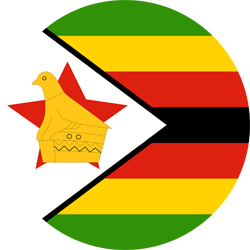Let’s go Sugar Bean Production this Winter
Farming pays!
Planting should always be targeted to avoid Frost: end of | Total Variable Costs/Ha |
|
| 100,00% | 1 000,00 | |
Gross Income at 2.50 t/ha | Best Case 1 |
|
|
| 2 875,00 | |
Gross Margin before overheads |
|
|
| 1 875,00 | ||
Return per $TVC |
|
|
| 2,88 | ||
|
|
|
|
| ||
Total Variable Costs/Ha |
|
|
| 1 000,00 | ||
Gross Income at 1.50 t/ha | Middle Case 1 |
|
|
| 1 725,00 | |
Gross Margin before overheads |
|
|
| 725,00 | ||
Return per $TVC |
|
|
| 1,73 | ||
|
|
|
|
| ||
Total Variable Costs/Ha |
|
|
| 1 000,00 | ||
Gross Income at 3.00 t/ha | Best Case 2 |
|
|
| 3 450,00 | |
Gross Margin before overheads |
|
|
| 2 450,00 | ||
Return per $TVC |
|
|
| 3,45 | ||
Sugar Bean Price/Ton (GMB, 2018) |
|
|
| 1 150,00 | ||
Break-even yield at $1150.00/Ton |
|
|
| 0.8Ton/Ha | ||
This is only a Gross Margin Budget Guide and is based on industrial average prices and only applies to irrigated winter Sugar Bean. Farmers should use figures relevant for their circumstances. Improve yields and contain costs to maintain a health value wedge!! Visit www.seedcogroup.com/zw for cost breakdown and more. | ||||||
“Do not let anyone fool you, farming pays and pays big” (John Basera, 2018). But, some fundamentals have to be true! One of the key fundamentals for farming enterprise management is to have different income streams. The more the better is the narrative! The principle follows that a farmer must send produce to the market every month-two months (at most), weekly or daily…the better and healthier.
This is key to improved liquidity flow on the farm, but more importantly addresses the overall top-line (annual, monthly or weekly incomes) of the farming enterprise. We can also add that crop diversity spreads risks and broadens the catch. The principle can be achieved through enterprise diversity (crops, animal husbandry, poultry etc. on one farm) and/or crop diversity (maize, soyabean, sugarbean, green mealies, vegetables, wheat etc.). It is almost hard to have a smoothly run and financially sound farming enterprise without having different streams of income.
Thinking of this winter, green mealie production, vegetable production, wheat production and sugar bean production are good and viable options that a farmer can take up. This week, we will explore the economics and the profit story of winter, irrigated sugar bean production, at farm level.
Winter sugar bean is one venture with a very lucrative Return On Investment (ROI), which farmers can consider for production in irrigation schemes, A2, A1, large and small scale farming sectors.
It is one enterprise which follows a basic gross margin principle that if you invest a dollar, you can get at least a two-fold return, assuming best agronomic practices are religiously adopted. Normally, the cost of production per hectare of irrigated winter sugar bean averages $1,000, after absorbing all variable costs e.g. fertilisers, seed, irrigation costs, electricity, labour, to mention just the major variable cost drivers. This cost structure excludes fixed costs.
If everything is done optimally, and GAPs (Good Agronomic Practices) are adopted as we strongly recommend, and achieving at least 2 tonne/ha, a farmer can rake in a minimum gross income of $2,300, up to $3,400 after a period of at most 4 months. The current rolling prices of $1150.00 per tonne of sugar bean are a “sweetener” enough to encourage farmers to take this venture and make more money. The farmer must always target to achieve yields above the break-even yield of 0.8tonne/ha, above 1tonne/ha, the better! At all times, a farmer must improve yields and contain costs to maintain a healthy value [wage] or margins. This is the rule of the thumb for sustainable farming enterprises and it is always wise to follow it!
The key phrase is Good Agronomic Practices (GAPs). Religious adoption of GAPs is key to improved productivity and profitability of any farming venture. If farm productivity and profitability go wrong, nothing else will go right for the farming enterprise (John Basera, 2018). Next week, we will give some important tips for successful and profitable winter sugar bean production.
Author: John Basera, Seed Co Agronomy and Extension Services Manager

 Zambia
Zambia Zimbabwe
Zimbabwe Malawi
Malawi Botswana
Botswana Nigeria
Nigeria


